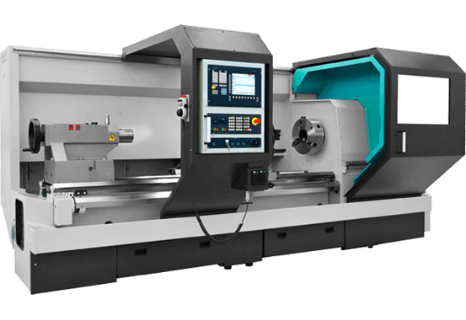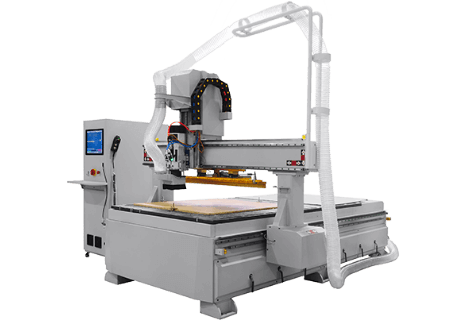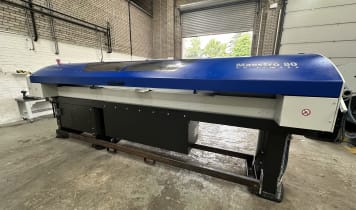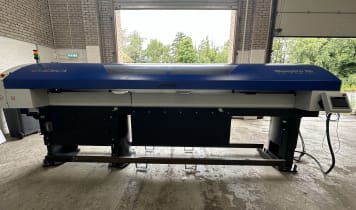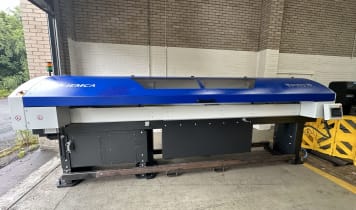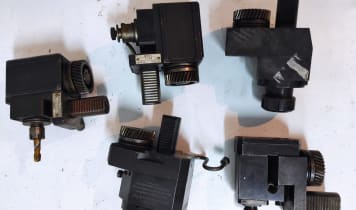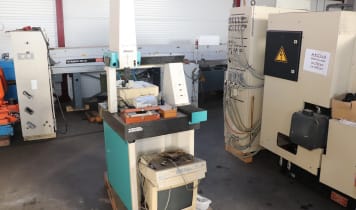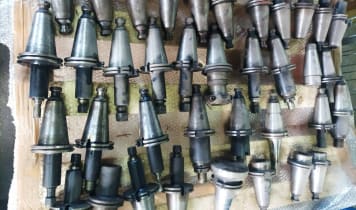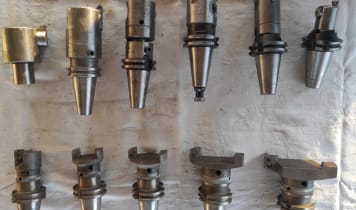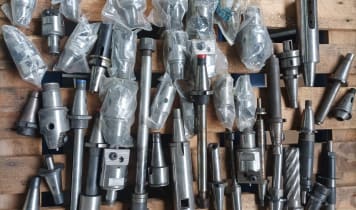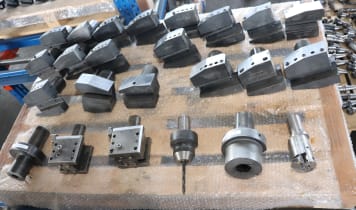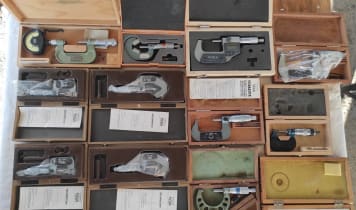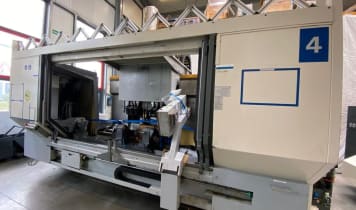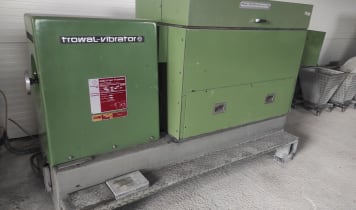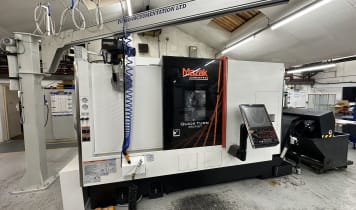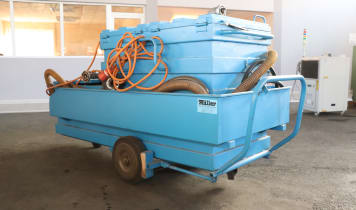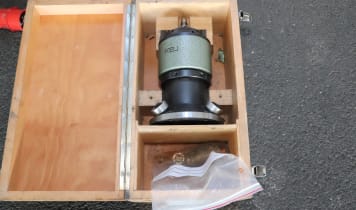Prototype-forming by casting and pressure casting
Metal is extracted from ore in the smelter and cast into slabs in the smelting plant. This area of metal processing is called prototyping and it involves shaping the metal without the use of machining techniques. This process is primarily of interest to the semi-finished product industry.Pressure die casting machines and cast iron plants, on the other hand, directly process the metals from the smelting plant into the final products. Foundry machines include furnaces, pans, continuous casting machines and extrusion machines, using which profiles and semi-finished products are manufactured.
Shaping of metals
After creating a metal prototype, the metal is rolled and processed into blocks, slabs or strips. These are the first steps in the shaping process. The metal is then transformed from one shape to other by pressing, rolling, bending, folding or forging, using a machine designed for each step.
- Rollers are used in steelworks and sheet metal processing operations to straighten and assemble thin sheets
- Presses can form a wide variety of final products from the metal blanks provided
- Folding presses fold metal sheets into the desired angle
- Forging presses are used for especially large-scale, solid workpieces. They are often used to prepare components that will be subjected to large forces/strain
Forging produces especially hard and resilient products. In order to forge more complex workpieces, such as crankshafts, it is often the case that several forging tools are used one after the other. These then shape the workpiece to the desired form through incremental steps.
These shaping processes, however, do not alter the mass of the metal, but this is not the case in most metalworking procedures. Press brakes, shearing machines and general presses are known as sheet metal processing machines.
Separating processes
Separating processes include the machining of workpieces using the following machines:
The simplest ‘dividing machines’ in the metal industry are sheet metal cutters and shearing machines, which cut the sheet metal provided in one linear direction.
Punching and notching machines can then be used to punch out predefined sections of the blank.
When it comes to fine machining, CNC milling machines are the number one choice. They can machine metal blocks in any way needed and can manufacture highly complex contours.
Lathes, on the other hand, are used for producing rotationally-symmetric turned parts. Mills and lathes belong to the field of machining.
The highest-quality CNC mills are machining centres. They can perform both manufacturing processes with excellent repeat accuracy and consistent quality.CNC machining centres are some of the most complex, state-of-the-art and expensive machines in the metal industry, which still applies when buying second-hand.
A special type of milling/grinding machine is the gear cutting machine, which is used to created gears and other toothed wheels. Gears and the like need to feature consistent precision, even in serial production, which means the machines must be extremely high quality. The gear cutting machine is similar to conventional machining centres, but it features a few special functions specially tailored to their task. A gear cutting machine (also including rolling machines and gear grinding machines) is usually downstream of a hardening facility, which makes metallic gears highly resilient.
Another widespread yet simple piece of machining equipment is the drilling machine. It is used for setting blind- and through-holes as well as cutting threads. Nowadays, drilling machines are frequently integrated into CNC machining centres.
Finishing and surface processing are then performed by grinding, polishing and lapping machines. They ensure that the abrasion process only removes a hundredth or thousandth of a millimetre for extremely precise results. In addition to achieving the desired tolerances, grinding, polishing and lapping machines also serve to prepare metals for galvanising. Applying chrome finishes to metallic products also requires thorough polishing treatment.
A special type of division and abrasion machinery is the eroding machine. These “reverse welding machines” operate using an electric current and can create highly precise cavities in metal blocks. Eroding machines are often used in tool-building and produce resilient highly precise tools for presses, punching machines, and pressure/injection casting machines.
Cutting metals without tools
In addition to mechanic division processes, such as sawing, milling and grinding, there are also some ways of cutting metals which do not require any tools.
The simplest and cheapest way of cutting metal into pieces is flame cutting. This involves a flame consuming fuel gas and oxygen at high temperatures being guided through a piece of metal.It can be a fairly rough method and produces imprecise gaps of several millimetres even when operated using CNC equipment. Flame cutting also creates a zone of several millimetres along the burning edges in which the metal hardens to a great extent. If this is not desired for the end product, this “heat-affected zone” must then be milled.
Plasma cutting is similar to flame cutting but it is more precise and less prone to creating heat-affected zones. Using CNC guidance and a firing table, plasma cutting can produce highly precise contours even on thick material.Flame- and plasma-cutting machines require a starting material that is at least a few millimetres thick. Plasma- and flame-cutting can also be used on materials up to several centimetres thick.
When it comes to thin sheets, laser cutting is the ideal choice. It produces extremely fine, precise results without resulting in any significant cutting loss. In contrast to flame cutting, laser cutting is not possible using a hand-held device. Laser cutting machines are generally stationary work tables with computer numerical control (CNC).
In cases where cold cutting processes are preferred, water jet cutting is the path to take. This established method involves a very strong and piercing jet of water and an abrasive medium cutting through metallic sheet material. Also known as “aqua cut”, this procedure produces no heat-affected zones whatsoever and can achieve very high levels of precision.
Metal joining
The most widely used process to join metals is welding. The simplest form of welding is friction welding, but it is rarely used. Electric- and gas-shielded arc welding are far more widespread. Submerged arc welding (SAW) is the ideal choice for very thick sheet metal.
Electric- and gas-shielded arc welding devices are available as hand-held tools through to large-scale stationary welding machines. Friction and SAW welding devices are only used for processing large parts.
Other methods of metal-joining include riveting and gluing.
Metal surface treatment
Alongside grinding and polishing are a number of other surface treatment machines designed for use on metals, which can be sub-divided into “coating machines” and “treatment machines”.
Coating machines
The coating machines used in the metal industry are primarily galvanic coating systems. They cover the finished metal product with a thin layer made from zinc, copper, gold or chrome. The simplest galvanic coating systems are known as hot-dip galvanising plants. They are mostly used on steel products to provide permanent protection against corrosion.Chromium plating systems are also widely used. These are complex and use a multi-stage dipping procedure where the metal products are coated in a thin layer of shiny chrome.
In addition to galvanising, there are also powder-coating procedures that can be used on metal products. This involves subjecting the finished products to an electrical current which then causes them to attract a powder coating that is sprayed in their direction. Once coated in plastic-based powder, the products are taken to a furnace where the plastics melt and form a seamless surface that protects the metal from corrosion over its lifespan and gives to the product the desired colour.
Metals can also be coated using any number of painting and adhesion procedures.
Treatment machines
The main types of metal treatment machines are hardening/tempering plants using heat. These consist of an annealing furnace and a bath of oil and work by heating and rapidly cooling the workpiece to create a resilient, tempered surface zone. Hardened metallic products are often used where abrasion processes are expected: gear wheels, bearing shells, shafts and grinding paths are often given a hardened surface in order to increase the lifespan of the final product.
Precision checks by measuring and testing machines
A final product is only as good as its worst component. This is why a range of measuring and testing machines have been developed to ensure each single part of a construction possesses exactly the right properties and dimensions. Material testing is a very special component of metal processing. It can be roughly sub-divided into “destructive” and “non-destructive” testing methods.
Destructive metal-testing procedures
The classic machine used for destructive testing is the universal tensile testing machine, which works by clamping a metal sample in a tension device and pulling it until it falls apart. This helps precisely define the elastic and deforming zones of a material.
Notched impact hammers are also a widely used method that investigate the resilience of a material. They involve a rotating hammer that strikes a metal sample widthways to determine the force required to break it.
Hardness testing machines also require a defined, pre-treated sample, which they penetrate at a defined force using a needle to measure how deep the needle passes into the material. In recent years, widespread use of manual hardness testing machines is starting to give way to automated systems.
To obtain a comprehensive overview of a metal product’s composition, the machine to use is the spectrometer which closely examines the metal’s structure and any alloys present.
Non-destructive metal-testing procedures
Testing methods that do not destroy the sample include visual, tactile and more penetrative approaches.
Visual metal-testing processes include all testing steps that can be performed by the naked eye: from the ruler, measuring tape, measuring slider, test screw, magnifying glass or microscope – industry offers a huge selection of different testing tools for visual inspection. Today, these are often supported by highly precise laser measuring devices.
Tactile measuring methods may involve, for example, 3D coordinate-measuring systems that work by leading a highly sensitive probe or scanning head over a metallic product to measure its dimensional accuracy at a selection of pre-defined points. This approach is frequently used for checking welded constructions.
Two main approaches are used to glimpse inside the metal without destroying it: x-ray and ultrasound. X-ray is very precise and reliable but is dangerous due to the radiation produced, which becomes especially troublesome since some tests may take several hours (depending on material thickness).Ultrasound procedures, by contrast, are far quicker, less dangerous and can be performed using hand-held or stationary devices.
